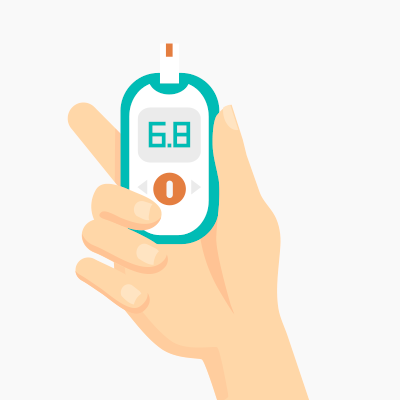By Jennifer Acosta Scott
Medically Reviewed by Lynn Grieger, RDN, CDCES
Last Updated: February 5, 2019
After 55-year-old Steve Cooksey was diagnosed with type 2 diabetes in 2009, he knew he wanted to approach the disease differently from the way his two family members with diabetes had.
“I went home and realized that to eat their way required more and more insulin," he says. For some reason, "My blood sugar should have been going down, but it wasn’t.”
A few months after he was diagnosed with type 2 diabetes, Cooksey abandoned the traditional diabetes diet in favor of the so-called paleo diet — a high-protein, low-carb food plan, likened to a “caveman diet,” that minimizes processed foods and emphasizes meats and vegetables. Within a month, Cooksey was able to stop taking all his medications, including those for diabetes, high blood pressure, and high cholesterol. He still checks his blood sugar regularly, and it’s always within normal ranges.
“I have normal blood sugars for normal people, not just normal blood sugars for a diabetic,” says Cooksey, whose website, Diabetes Warrior, explains the potential benefits of a paleo diet for diabetes.
What Benefits May the Paleo Diet Offer for People With Type 2 Diabetes?
Cooksey isn’t alone. In recent years, the popularity of the so-called caveman diet has skyrocketed, with many of its proponents touting paleo for its health benefits — namely, as an effective way to improve health and lose weight.
A study published in April 2015 in the European Journal of Clinical Nutrition suggests that people with type 2 diabetes who followed a "caveman diet" were able to help lower their blood pressure, stabilize their blood sugar levels, and reduce their cholesterol by significant amounts in only two weeks. Other study participants who followed a traditional diet recommended by the American Diabetes Association saw little to no improvement. Study authors gave participants enough food to prevent them from losing weight, eliminating the possibility that the health improvements came simply from shedding pounds. (1)
Researchers aren’t sure why the paleo-diet followers had better health outcomes, but it’s possible that paleo-friendly foods might be better suited for a type 2 diabetes diet than other foods, says Lynda Frassetto, MD, a nephrologist and the lead researcher on the study. "We believe there are multiple factors involved, including more fiber leading to decreased uptake of sugar from the intestines, more micronutrients and antioxidants, and potentially a healthier impact on gut microflora," says Dr. Frassetto.
Dr. Frassetto adds that these findings suggest that not all carbs are created equal. Carbs from fruit and vegetables come packaged with antioxidants and micronutrients, making them better for you than carbs from the grain in wheat bread or cereals, she explains.
The same ECJN study mentioned above also found that eating lean cuts of meat and other foods found in the paleo diet, such as fruits, vegetables, and nuts, in the short-term improved insulin sensitivity and lipid levels in people with type 2 diabetes. (1)
People with type 2 diabetes who follow a paleo diet may find that it helps them better control their blood sugar, says Melissa Joy Dobbins, RD, CDE, a spokeswoman for the Academy of Nutrition and Dietetics. “You’re eating hardly anything that would raise your blood sugar,” Dobbins notes. “You’re really restricting carbs, and that can keep your blood sugar down.” (2)
The diet also encourages whole, unprocessed foods, which is a healthy approach, she adds. Plus, the “bulkiness” of the foods may mean that you will feel full on fewer calories, encouraging weight loss, which is also beneficial for type 2 diabetes. (2)
Finally, a randomized controlled study published in January 2017 in Diabetes/Metabolism Research and Reviews studied how the paleo diet, and the paleo diet and exercise, affected weight and blood sugar control in a group of 32 people with type 2 diabetes. Researchers found that after 12 weeks, regardless of exercise, the paleo diet helped improve blood sugar control and reduce body fat, among other benefits, and those who also exercised enjoyed the additional health benefits of preserved lean muscle mass and boosted heart health. Nonetheless, this study is small and was short, so more research is needed before scientists know whether combining paleo and exercise may offer heart health benefits for these individuals. (3)










